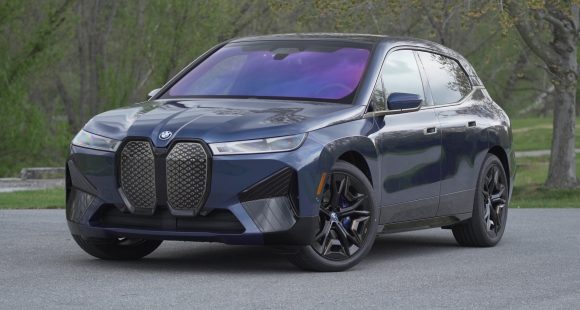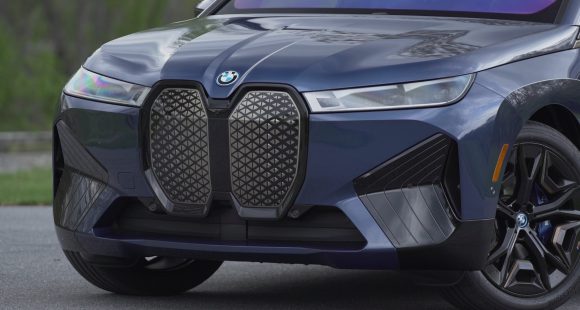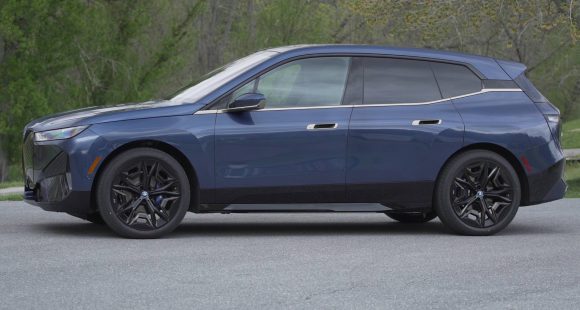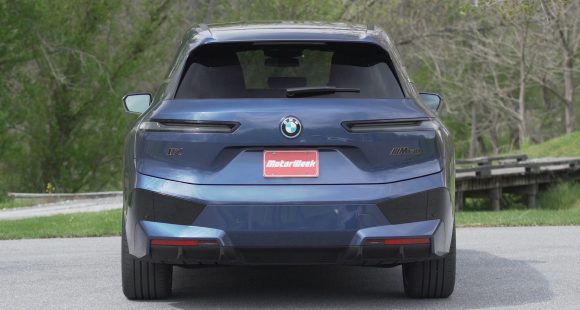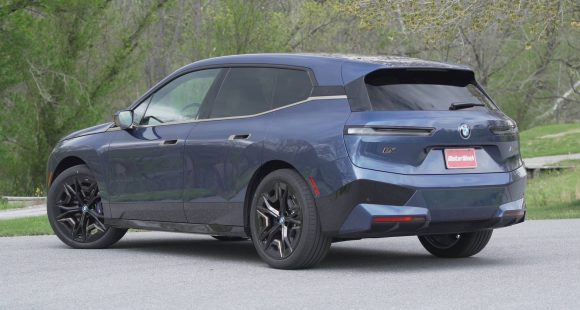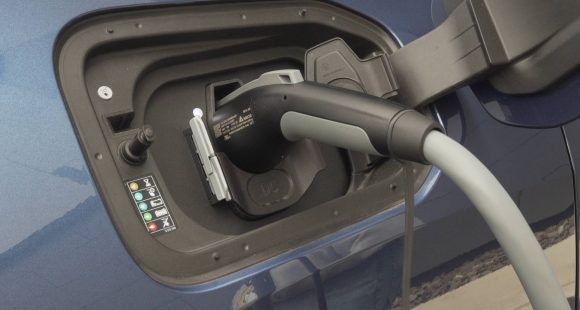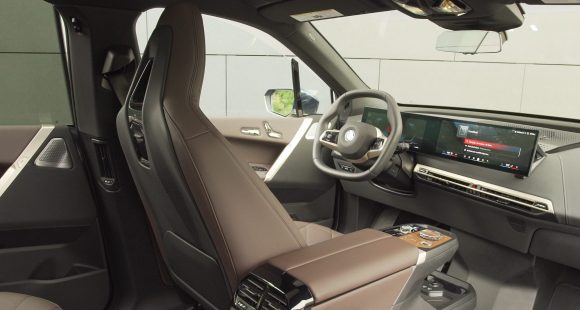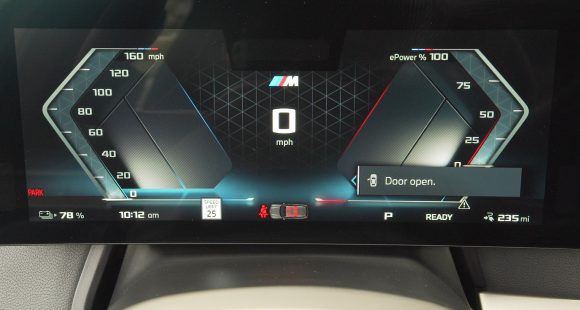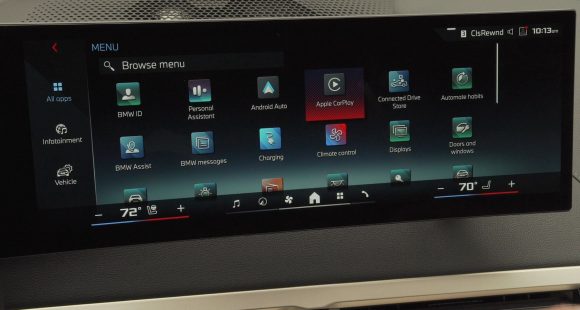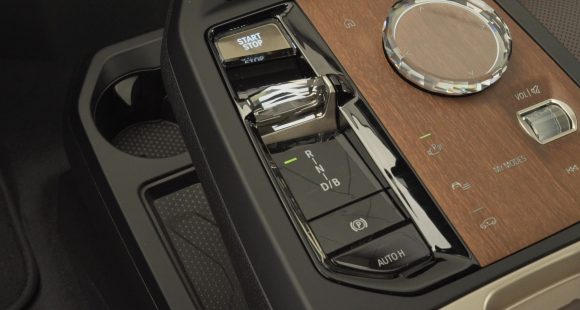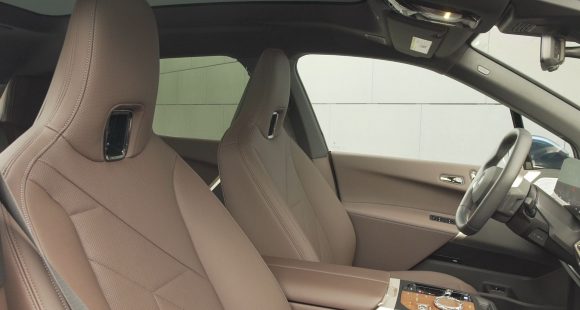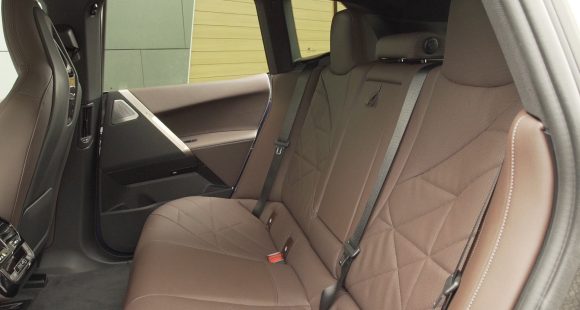2018 Porsche 911 Turbo S Cabriolet
When summertime arrives here at Motorweek, convertibles become very popular. Add the fact that our latest drop top was a Porsche 911 Turbo S, and well… the keys, as well as the car, always seemed to be “gone missing”. Fortunately, we were able to get some work done with it too. So, here’s our latest sun burned jaunt, Porsche style!
There may be more race-ready 911s that you can buy, but the Porsche 911 Turbo S is still the top dog in a lineup that now consists of some 20 911 variants. And this 2018 Cabriolet body style not only allows you to get in touch with nature while you’re streaking around your favorite back roads, but it make sure everyone knows who’s behind the wheel too. Whatever your motivation, you’ll find plenty to love here.
Of course one of our favorite things about any 911, is launch control. It’s equal parts brutality, simplicity, and rocketry; allowing you to leap off the line no matter where you are, with maximum effect.
 The pure visceral experience starts when you release the brake and slingshot off the line. All-wheel-drive traction gets you going in a haste; but prepare to do some quick steering, as depending on which wheel is getting the most grip, things can get interesting rapidly too.
The pure visceral experience starts when you release the brake and slingshot off the line. All-wheel-drive traction gets you going in a haste; but prepare to do some quick steering, as depending on which wheel is getting the most grip, things can get interesting rapidly too.
60 miles-per-hour arrives in just 2.9-seconds; stupid grins on your face, even quicker. And it all happens with intake, exhaust, and engine noises creating a harmony of awesomeness; as the turbo-6 pushes you down the track like a frightened gazelle.
No matter how many times you rip off sub-eleven second ¼ miles, it never gets old. This 911 Turbo S can do it in 10.8-seconds at 129 miles-per-hour.
After coming down from that adrenaline high, you can appreciate that all of this happens because of the 580-horsepower and 516 lb-ft. of torque that pours from the 3.8-liter twin-turbo flat-6. Last year saw new turbos added, as well as a Dynamic Boost function that maintains boost pressure even when you ease off the throttle, or when the 7-speed PDK triggers a shift.
Amazing brakes are nothing new to 911s or Porsches in general, but the way these 6–piston calipers grab the ceramic brake discs that are standard on the S is truly epic. Stops from 60 take just 90-feet.
 Running through a simple slalom course at our drag strip, is truly no test for this 911; but you do get a small taste of the insane grip, sharp turn-ins, and ultra-flat handling that the Turbo S has to offer. Does the fabric roof overhead compromise anything? Perhaps, but not that we could tell here.
Running through a simple slalom course at our drag strip, is truly no test for this 911; but you do get a small taste of the insane grip, sharp turn-ins, and ultra-flat handling that the Turbo S has to offer. Does the fabric roof overhead compromise anything? Perhaps, but not that we could tell here.
And we all know the Turbo S is no one trick pony; once you’re done seeking low e.t.’s, or slicing up the slalom like a Ginsu knife, it’s just as rewarding heading to your favorite far off place.
Seeing 911s on the road is not exactly a rare occasion; yet our Guards Red Cabriolet still garnered its fair share of attention. People may not always know why, but they can sense there’s just something special about this 911.
Top or no top, the look is all classic Porsche; round headlights, smooth body, wide hips, the whole package. This Turbo S of course, rides on 20-inch center-lock wheels.
Not surprisingly, top operation is as speedy and efficient as the rest of the car.
 Sitting inside, everything just feels right, with all of the important stuff falling readily to hand.
Sitting inside, everything just feels right, with all of the important stuff falling readily to hand.
The up-sweeping center console still hosts plenty of physical buttons. Meanwhile, Porsche’s touchscreen interface has steadily improved…it’s now quite intuitive.
Seats have a “business first” feel, with that business being keeping you in place at high speeds on a road course; yet they are plenty comfortable for leisurely-long drives through the countryside.
Government Fuel Economy Ratings are not painful at all for a car with this much performance; 19-City, 24-Highway, and 21-Combined. We averaged 22.1 miles-per-gallon of Premium. So that’s an only slightly worse than average Energy Impact Score of 15.7-barrels of yearly oil use, with CO2 emissions of 7.1-tons.
And then of course there’s the matter of pricing. While the 911 Turbo starts at $162,850, stepping up to the 580 horse S Cabriolet will cost you $204,050.
But, be still that racing heart, as you can get the 911 Carrera Cabriolet…with only 420 horsepower…for about half that.
Still, the 2018 Porsche 911 Turbo S remains our aspirational vehicle, and it has managed to stay relevant despite a new upstart supercar arriving almost weekly. There’s still nothing else on the road quite like it.
Specifications
- Engine: 3.8 liter
- Horsepower: 580
- Torque: 516 lb-ft.
- 0-60 mph: 2.9 seconds
- 1/4 mile: 10.8 seconds @ 129 mph
- EPA: 19 mpg city / 24 mpg highway
- Energy Impact: 15.7 barrel of oil/yr
- CO2 Emissions: 7.1 tons/yr
2024 BMW iX M60
Still Quirky, But A Whole Lot Faster!
While many BMW EVs are virtually identical to their ICE counterparts, when it comes to their iX utility vehicle, well, that’s its own unique animal, especially when it comes to this 610-horsepower M60. And now we get a chance to see if we can tame it.
High-performance SUVs are nothing new to BMW, so when their all-electric iX utility debuted for 2022, it didn’t take long for them to inject a little M performance into it. And while we did get some early seat time in the iX M60, this 2024 version is the first time we’ve been able to give it a complete test.
A refresher on the details, the M60 uses a dual motor arrangement; the front motor putting out 255 horsepower, the rear motor almost twice as much. Combined, they whip up 610 horsepower and 811 lb-ft of torque, which we couldn’t wait to exploit at our test track.
xBMW’s electric motors are built in-house, and are unique from most as they use electric pulses to trigger the rotors instead of magnets. This comes into play most obviously in the rear motor where its immediate power delivery somehow seems even more immediate than most. Absolutely zero drop-off in power throughout the quarter-mile, with our best time an 11.7 at 119 mph.
While handling is BMW’s forte regardless of powertrain or vehicle segment, we could feel a little more weight transfer here in the M60, compared to the xDrive50. That’s despite the four-corner air suspension with automatic level control getting some M-spec tuning.
We really had to keep inputs smooth to avoid a full shutdown from the stability system; there was also noticeable lag time between when we initiated turn-ins and when those commands were actually carried out. All of this made more difficult by the iX’s goofy-shaped steering wheel and front seats that feel more like a recliners than sport seats. Brakes felt mostly the same as in the xDrive50: Very little nose dive, good feedback, and consistent drama-free stops from 60 in just 102 feet.
On the street, it feels incredibly fast, bordering on outrageously quick.
So, while it’s still a bit of a mixed bag when it comes to driving on the track, on the street, it feels incredibly fast, bordering on outrageously quick. Meaning you better be prepared for the fury that’s about to be unleashed if you go full in on the accelerator.
And even with all of the performance, and using the same 111.5-kWh battery, the M60 still delivers great range of 296 miles, just 11 fewer than xDrive50. Max charging rate of 250 kW will get you to 80% in 35 minutes.
Whether it’s that steering wheel, the minimal dash with the sweeping digital cockpit display, the center console’s wood and glass controls, heating elements in the armrests, gesture control, or the Panoramic Sky Lounge LED sunroof that frosts over at the touch of a button, it’s all kind of a “far out” experience in the cabin. But also, a very roomy one with almost an open floor plan up front, and lots of space and features for rear seat passengers. Capacity in the cargo area is 35.5 cubic-feet; folding seatbacks can expand the space to 77.9 cubic-feet.
Similar in size to the X5, the iX is built on a unique spaceframe architecture made up of a combination of carbon-fiber, high-strength steel and aluminum, an evolution of what they started back in 2014 with the i3, their first EV. Unique elements for the M60 include blue brake calipers, adaptive LED laserlight headlights, and 21-inch wheels which can be upgraded to these 22-inch M two-tone alloys. It’s not the most beautiful BMW we’ve seen lately, but it sure is unique, and everyone will know it’s not your typical BMW.
Using 42 kWh of energy per 100 miles, the M60 earns a fair efficiency rating. Considering base pricing for the xDrive50 starts at $88,095, the step up to the M60 is a significant one at $112,495.
Admittedly, we weren’t completely enamored with the original iX; great EV, it was just a little too much off-brand for us. It still has its quirks; but after injecting a whole lot more BMW into this 2024 BMW iX M60, now that seems much more like it!
Specifications
As Tested
- Motor Setup: Dual Motor
- Battery Size: 111.5-kWh
- Horsepower: 610
- Torque: 811 lb-ft.
- EV Range: up to 296 miles
- 0-60 mph: 3.5 seconds
- 1/4 Mile: 11.7 seconds at 119 mph
- Braking, 60-0 (avg): 102 feet
- Max Charging Rate: 250-kW
- Efficiency: 42-kWh / 100 miles
















